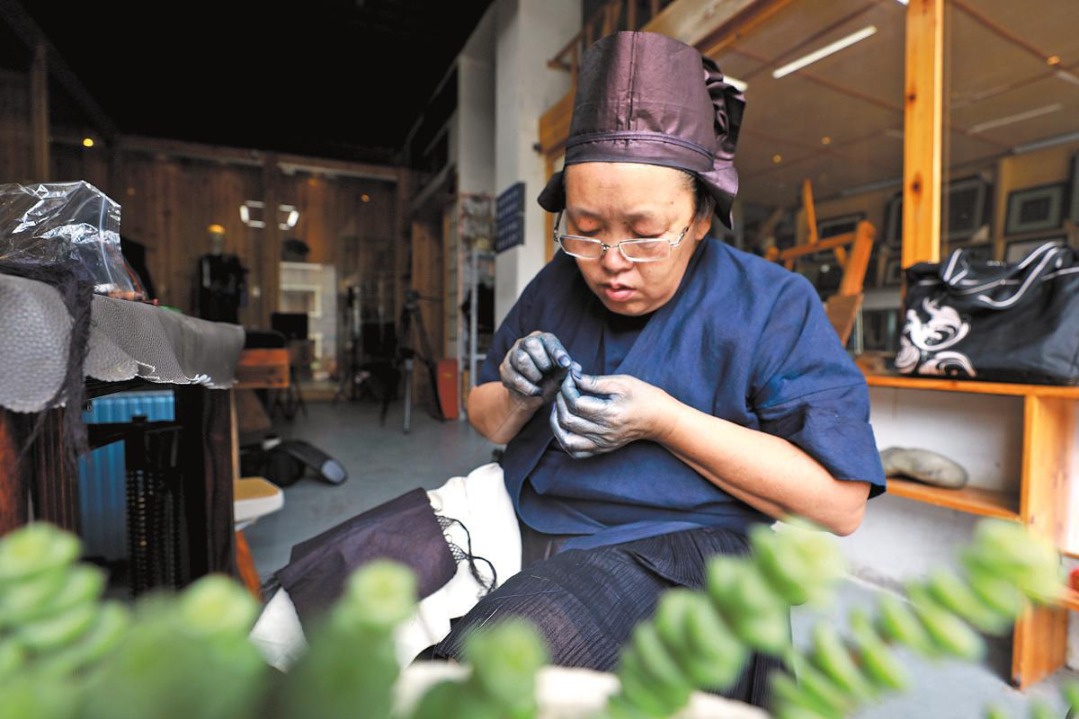Faculty, students face growing AI challenges
Research tools can produce flawed or fictitious academic references

Nearly 80 percent of university teachers and students in China have encountered deceptive "AI hallucinations" — seemingly credible but factually flawed content generated by artificial intelligence — while more than 65 percent of students have faced academic disputes linked to AI tools, according to a new study.
The study by Beijing-based education consultancy MyCOS, which surveyed 2,971 university students and 1,073 faculty members, highlighted critical challenges in AI adoption across campuses. Data was collected online from July 8 to 21, and the findings were released on Thursday.
It found that 79.2 percent of students and 77.1 percent of faculty had experienced AI-generated content containing errors disguised as plausible information. To counter this, 57.4 percent of students and 57.2 percent of teachers said they manually verified outputs using authoritative sources.
Notably, 42.7 percent of students cross-checked multiple AI tools, significantly higher than teachers at 32 percent, revealing students' stronger tendency to "use technology to regulate technology", the study said.
Overall, 85.5 percent of students expressed concern about AI-facilitated misconduct such as plagiarism or data fabrication.
Despite 67.8 percent of students and 60.4 percent of faculty confirming their institutions had explicit AI usage policies, skepticism prevailed. About 42 percent of both groups deemed existing guidelines only "partially effective", while more than 11 percent criticized policies as outdated.
Gao Xin, a first-year graduate student at Fudan University in Shanghai, said she uses AI once or twice a day. She relies on it as a search engine for daily life, to find ideas for her social media accounts, get structural suggestions for news writing and summarize or explain academic papers in plain language.
"When using AI as a search engine, if the question is important, I'll ask AI to provide the source websites and then check whether they are authoritative," she said.
Although university rules permit AI for literature searches, Gao said the results are often unreliable and sometimes include fake papers that do not exist on the China National Knowledge Infrastructure, or CNKI, a leading online academic database.
She now uses AI mainly to suggest keywords or to translate foreign-language papers — especially non-English ones — which she finds clearer and more accurate than other translation tools.
"I'm afraid that relying on AI too much might lead me to break school rules or lose my ability to think independently, so I deliberately avoid it in academic papers," she said.
Qiu Letao, a graduate student in her first year at Tsinghua University, said students there receive some guidance on the use of AI in academic work, including in an academic ethics course. However, she said the guidance does not specify a numerical limit on AI-generated content, and there is no unified policy at the university level.
Qiu said she uses AI almost daily, primarily to generate ideas and gather reference materials for coursework.
In her personal life, she occasionally uses DeepSeek for lighter purposes, such as fortune-telling or casual conversation.
When seeking information, she said her first choice is still a conventional search engine, such as Quark or Baidu, and she deliberately avoids the AI-generated summary features embedded in them.
"AI often produces answers without explicit sources or sufficient context, which makes me question their reliability," she said. She typically verifies information through news coverage or academic databases such as CNKI.
Qiu said she uses AI relatively frequently in academic writing but remains cautious. "I am concerned that AI-generated content could lead to academic misconduct, and I expect that standards governing its use in scholarly work will become increasingly stringent," she said.
Her approach is to first develop a detailed outline, ensuring that all core arguments and contributions are original.
"I integrate relevant excerpts from literature directly into the outline and then generate content one paragraph at a time, rather than asking AI to write a paper of more than 1,000 words at once, so I can maintain control over the style and accuracy," she said.
Xi Zhimiao contributed to this story.





































